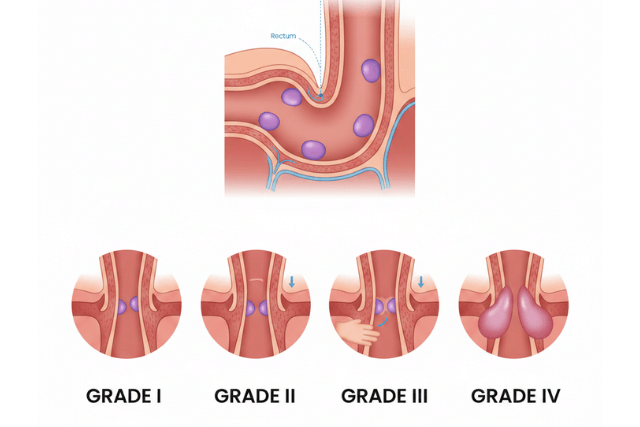Is fistula an STD?” This question often arises when people hear about fistulas for the first time, mainly because the term is frequently associated with serious health conditions. However, there are many misconceptions about what a fistula is, its causes, and whether it can be linked to sexually transmitted diseases (STDs). In this article, we’ll clarify these misunderstandings and provide accurate, easy-to-understand information to help you separate fact from fiction.
Fistulas are a medical condition that involves an abnormal connection between two body parts, such as between the intestines and the skin or between the bladder and the vagina. Though this condition can be severe and even life-threatening, it is not an STD. Let’s take a closer look at what fistulas are, how they form, and how they differ from sexually transmitted infections.
What is a Fistula?
Before addressing the main question, “Is fistula an STD?” it’s essential to understand what a fistula is. A fistula is an abnormal or unnatural passage that forms between two organs or vessels in the body. These passages can develop between various body parts, including the skin, intestines, bladder, vagina, and other organs.
Fistulas can form for several reasons, such as infection, surgery complications, or chronic conditions like inflammatory bowel disease (IBD) or cancer. The most common types of fistulas include:
- Anal Fistula: A passage between the skin near the anus and the anal canal.
- Vesicovaginal Fistula (VVF): An abnormal connection between the bladder and the vagina
- Enterocutaneous Fistula: A connection between the intestines and the skin.
Is Fistula an STD?
Now, let’s get to the heart of the matter: Is fistula an STD? The simple answer is no, fistula is not a sexually transmitted disease. While it is true that some types of fistulas can occur in areas affected by sexual activity, such as the anal and vaginal areas, the condition itself is not caused by an infection transmitted through sexual contact.
Fistulas can develop for a variety of reasons that are unrelated to sexual activity. For instance, anal fistulas often occur as a result of previous infections, abscesses, or complications from surgery. Similarly, a vesicovaginal fistula (VVF) can develop due to childbirth complications, where a tear occurs between the bladder and the vagina.
Therefore, while certain types of fistulas may occur in individuals who are sexually active, they are not a direct consequence of STDs. Instead, they result from other factors like infections, trauma, or medical conditions.
Understanding the Causes of Fistulas
Fistulas form when an abnormal opening develops between two organs, but what exactly causes this? Below, we’ll explore the most common causes of fistulas and their relation to the body’s normal function:
- Infections: Many fistulas occur after an infection, such as an abscess. For example, an abscess near the anus can result in an anal fistula if the infection spreads to surrounding tissues.
- Chronic Diseases: Conditions like Crohn’s disease, a type of inflammatory bowel disease, can lead to fistulas. These conditions affect the gastrointestinal tract, making it more prone to fistula formation
- Childbirth Complications: In women, childbirth can sometimes result in vaginal tears that connect to other organs, leading to a vesicovaginal fistula or rectovaginal fistula. These are typically not related to STDs, but rather to the mechanical stresses of labor.
- Surgical Complications: Some surgeries, particularly those involving the gastrointestinal tract or reproductive organs, can inadvertently lead to the development of fistulas.
- Trauma or Injury: Physical trauma, such as a wound from an accident, can create an abnormal passage between organs, resulting in a fistula.
As you can see, sexual transmission does not cause the majority of fistulas. It’s crucial to understand these factors to address misconceptions and clarify any confusion.
Types of Fistulas and Their Symptoms
There are several different types of fistulas, each with its own causes and symptoms. Below, we’ll explore the most common types of fistulas:
1. Anal Fistula
Anal fistulas are often the result of an abscess near the anus. Symptoms include:
- Pain or discomfort around the anus
- Swelling or redness
- Discharge of pus or blood from the opening
These types of fistulas are not sexually transmitted but can result from poor hygiene, infection, or injury.
2. Vesicovaginal Fistula (VVF)
A vesicovaginal fistula is a tear that forms between the bladder and the vagina, typically as a result of childbirth complications. Symptoms include:
- Involuntary leakage of urine
- Urinary tract infections
- Vaginal discharge
VVF is not associated with sexually transmitted diseases but can occur in women after prolonged or difficult labor.
3. Enterocutaneous Fistula
This type of fistula connects the intestines to the skin, often as a result of surgery or infection. Symptoms may include:
- Leakage of stool or intestinal fluids through the skin
- Infection or skin irritation
Medical conditions such as Crohn’s disease or surgical complications typically cause these fistulas, not STDs.
How Fistulas Differ from STDs
Sexually transmitted diseases (STDs) are infections that spread primarily through sexual contact. Common examples include chlamydia, gonorrhea, syphilis, and HIV. While some STDs can lead to complications that may involve fistulas, they are two distinct conditions with different causes and symptoms.
Here’s a quick breakdown of the differences:
- Fistulas: Abnormal passages between organs or vessels that are often caused by infection, surgery, trauma, or chronic diseases like Crohn’s disease. They are not transmitted through sexual contact.
- STDs: Infections spread primarily through sexual activity. STDs cause symptoms like pain, sores, and discharge and bacteria, viruses, or parasites cause them.

Common Misconceptions About Fistulas and STDs
There are several misconceptions surrounding fistulas and their connection to STDs. Let’s clear up some of the most common misunderstandings:
1. “Fistulas are always caused by STDs”
This is false. While certain STDs, such as gonorrhea, can cause pelvic inflammatory disease (PID), which may lead to fistulas in rare cases, the majority of fistulas occur for other reasons, such as infection or medical conditions like Crohn’s disease.
2. “You can only get a fistula from sexual activity”
Fistulas can occur without any sexual involvement. Bacteria often cause an abscess, which can result in an anal fistula, not sexual transmission.
3. “Fistulas are only found in women”
While certain types of fistulas, such as vesicovaginal fistulas, are more common in women due to childbirth, fistulas can occur in all genders.
Treatment and Prevention of Fistulas
Treatment for fistulas depends on the type and severity of the condition. In conclusion, doctors may require surgery to close the fistula in some cases, while in other cases, they may use antibiotics or drain an abscess to provide sufficient treatment. Preventing fistulas involves addressing the underlying causes. For example:
- Good Hygiene: Proper hygiene can reduce the risk of anal fistulas.
- Medical Management: Managing chronic conditions like Crohn’s disease can help prevent fistulas from forming.
- Safe Childbirth Practices: Proper care during labor and delivery can reduce the risk of fistulas related to childbirth.
FiLaC® (Fistula-tract Laser Closure),A Revolutionary Treatment at IBI Laser Therapy
At IBI Laser Therapy, we offer FiLaC® (Fistula-tract Laser Closure), a cutting-edge treatment for anal fistulas. This minimally invasive procedure uses laser technology to effectively seal the fistula tract, promoting faster healing with minimal discomfort and a shorter recovery time. FiLaC® provides a highly successful alternative to traditional surgery, ensuring a less invasive option for patients seeking relief from anal fistulas. Schedule a consultation with us today to learn more about how FiLaC® can help you find effective and lasting relief.
Conclusion: Is Fistula an STD?
In conclusion, we answer the question ‘Is fistula an STD?’ with a definitive no. While sexual health-related areas may form fistulas, sexually transmitted infections do not cause them. Fistulas result from various factors, including infections, surgery, childbirth complications, and chronic diseases.
It’s important to understand the true causes of fistulas and differentiate them from sexually transmitted diseases. If you suspect you have a fistula or are experiencing symptoms like unusual discharge or pain, it’s crucial to seek medical attention for a proper diagnosis and treatment plan.
By dispelling misconceptions and focusing on the facts, we can better understand fistulas and their impact on health.
Key Takeaways:
- Fistulas are not STDs and can occur due to various causes like infections, surgery, or chronic conditions.
- Understanding the types of fistulas and their causes helps clarify common misconceptions.
- Seeking medical help early can improve treatment outcomes for fistulas.



